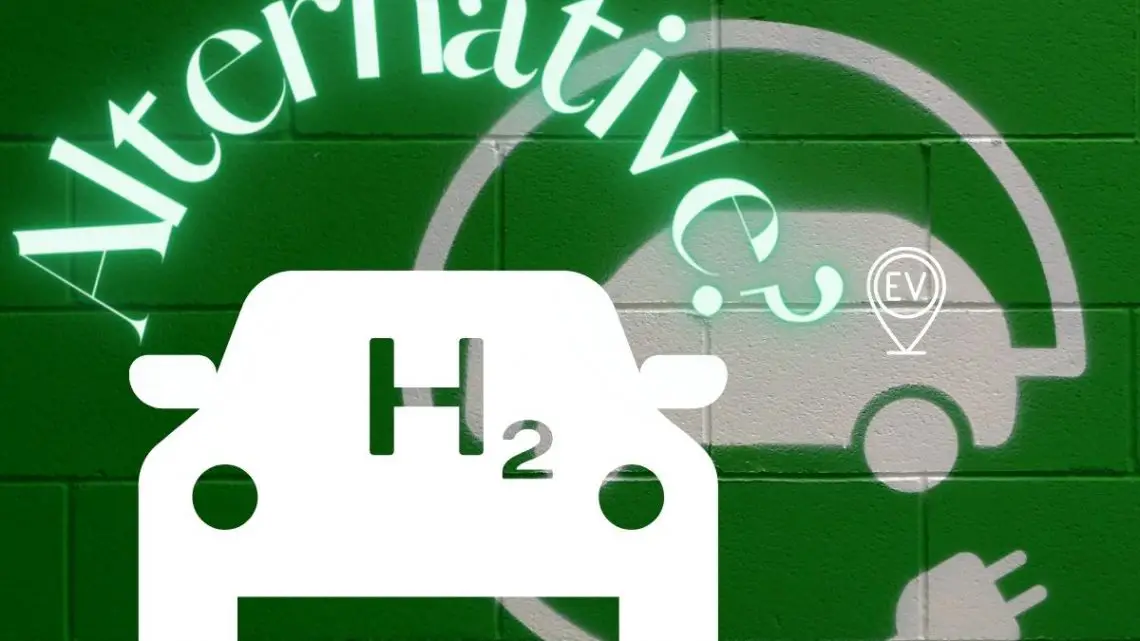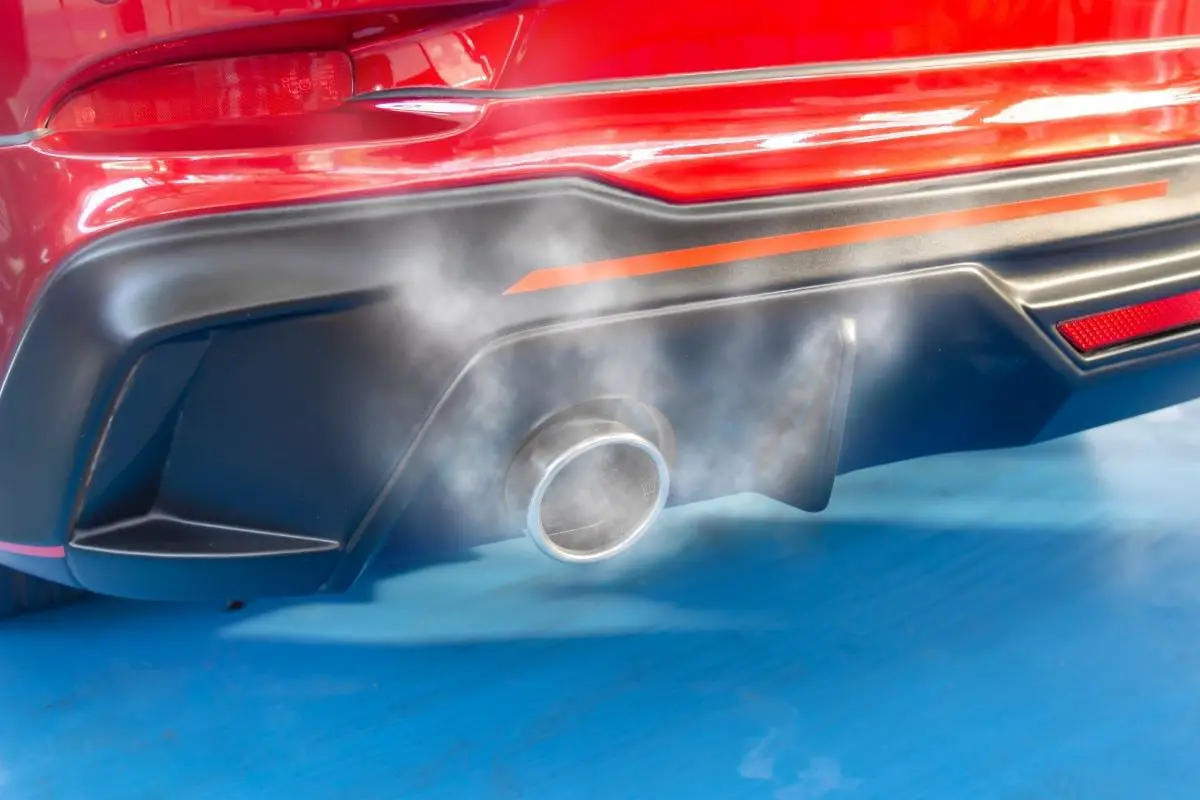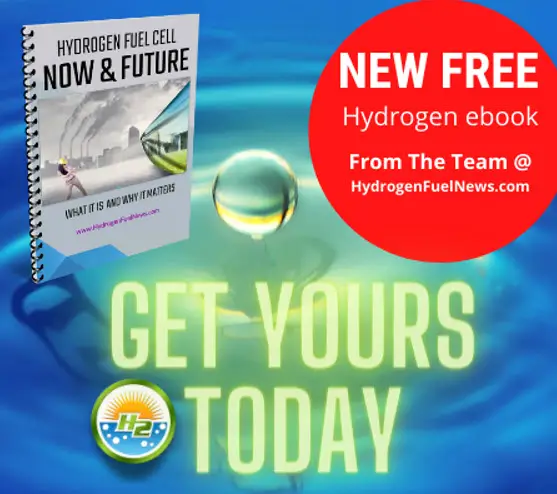
Is a hydrogen combustion engine a viable alternative to battery electric?
December 30, 2021Toyota and other companies are pushing for the development of these H2 cars, but are they feasible?
Last summer, Toyota announced that it was working on the development of a hydrogen combustion engine, leaving many to wonder whether this technology has the potential to replace traditional gas or diesel vehicles and if it could compete with battery electric vehicles (EVs).
While some automakers are moving full speed ahead with H2 vehicles, others have stepped back.
As development continues on a hydrogen combustion engine, as does the competition between those betting on a future of EVs and those who believe in hydrogen cars instead. What is known is that transportation as a whole must decarbonize if the world is to meet its climate targets. While automakers of passenger cars showed considerable early interest in H2, many of those who were looking into the alternative fuel early on backed off, even if they maintained their focus on it for heavier duty purposes such as for transport trucks or heavy machinery.
That said, the automakers that have kept up their interest in using H2 for cars, as well as other vehicles, have been developing fascinating technologies with a focus on range, rapid refuelling time, size, weight, safety, cost, and many other factors. Among those technologies is a version of the internal combustion engine (ICE).
Will a hydrogen combustion engine be what propels H2 powered cars into the mainstream spotlight?
The idea of H2 cars isn’t anything new. They’ve actually been around for decades, both in concept and in actual production. The most famous is the Toyota Mirai, of which two generations of models have already rolled off the production line, followed by the Hyundai Nexo crossover. Honda had been moving along with the Clarity FCEV, but recently gave that project the axe.
->LATEST ARTICLE: TOYOTA ANNOUNCES 2022 MIRAI PRICE
That said, despite many attempts, H2-based fuel cell electric vehicles (FCEVs) have yet to take off at a mainstream level. While there are models on the road, they remain quite rare. In both the remaining existing models of H2 cars on the road, Toyota and Hyundai have been using H2 to power a fuel cell, which uses a chemical reaction to convert the energy into electricity that powers an electric motor, which propels the vehicle.
However, that process remains both expensive and complex. Therefore, Toyota is also looking into the opportunities for a hydrogen combustion engine that will still focus on H2, but that will propel the vehicle in an entirely different way.
What makes a hydrogen combustion engine different from traditional FCEVs?
Producing and driving an FCEV involves many different components. After all, to make the vehicle work in the way described above, the vehicle requires H2 tanks, the fuel cell, and also one or many electric motors, depending on the configuration of the vehicle. These must all be smoothly and safely combined into a single unit. Moreover, using H2 in this way requires that the vehicle contain platinum or other highly expensive rare and precious metals. That is necessary for the oxygen reduction reaction within the vehicle’s fuel cell.
In this article, #ToyotaTimes provides basic information on #hydrogen, the key energy source in achieving #carbonneutrality, by responding to various questions about the viability of hydrogen that the general public has. https://t.co/DBJvnBGN6O #Toyota pic.twitter.com/tEqs6mr4rU
— Toyota Motor Corp. (@ToyotaMotorCorp) July 15, 2021
On the other hand, a hydrogen combustion engine works far more simplistically in comparison. It is, after all, quite similar to conventional ICE designs running on fossil fuel. As a result, this could mean that existing engines can be adapted to run on H2 by swapping out certain components, such as the spark plugs and fuel delivery system. In this way, it would reduce the number of changes required for switching cars to H2 instead of gasoline or diesel.
after all, quite similar to conventional ICE designs running on fossil fuel. As a result, this could mean that existing engines can be adapted to run on H2 by swapping out certain components, such as the spark plugs and fuel delivery system. In this way, it would reduce the number of changes required for switching cars to H2 instead of gasoline or diesel.
This is advantageous to automakers because it means that they would be able to keep their main vehicle base, which has been tested and proven over time, and update it to suit H2 applications without the need for massive changes – and investments into – electric powertrains. The switch to a hydrogen combustion engine could convert a conventional ICE vehicle into a very low carbon emissions vehicle. 
Why isn’t a hydrogen combustion engine a zero-carbon emission vehicle?
While an H2 car based on FCEV technology is zero-carbon emission, emitting only water in its operations, the same cannot quite be said about the hydrogen combustion engine. Though the difference is minute, it exists. The reason is that while using H2 in this way, the vehicle requires engine oil and will burn a tiny amount of it. As a result, H2 ICE will produce a very low amount of nitrogen oxide (NOx) emissions. Though it is substantially lower than even the most efficient gasoline or diesel-powered vehicles today, it does still emit NOx, meaning that FCEVs are the true zero-carbon emission vehicles between them.



 With over 15 years of reporting hydrogen news, we are your premier source for the latest updates and insights in hydrogen and renewable energy.
With over 15 years of reporting hydrogen news, we are your premier source for the latest updates and insights in hydrogen and renewable energy.
Please. What do you imagine NOx emissions have to do with carbon emissions. Nitrogen is not carbon and NOx emissions are a result of Nitrogen and Oxygen, both from the air, combining to form oxides of nitrogen in the combustion process. The CO2 emissions from lubricating oil burnt in an ice is vanishing small in a well maintained engine.
Yes U r Correct, n all Battery Electric vehicle’s r not Zero CO2, what n where r they Recharged !?!
Just for the record, my PHEV recharges roughly 10% on breaking and near 0 break pad dust -also a pollutant. Oh, and the power plant runs cleaner than my ICE and the Refinery and the Diesel truck that brings the gasoline to the station, and the well and transportation to the refinery and . . .recycling and battery technologies are making leaps. FYI
The answer is simply this: NOx is 1000 percent worst for the environment than CO2. Small amounts can have devestating effects on our world.
Also important is the fact that ICEs are much less efficient than electric motors. The electric powered motor, irrespective as to the source of the energy will out perform any ICE.
The simple fact is “Waste to Energy” producing Renewable Natural Gas (RNG) from organic waste (farms, municipal waste, landfill gas, food spoilage) is much more environmentally friendly than producing electricity as 60% of present electricity is generated by fossil fuel power plants. The RNG can be used itself interchangable with fossil natural gas for cooking or heating. It can also be used for transportation using internal combustion engines powered by RNG. The RNG can also be converted to Cyan Hydrogen for cars and trucks running on hydrogen, fuel cell or internal combustion engine. “Waste to Energy” is a compelling “Renewable Hydrocarbon” that needs to be explored and developed. A national discource needs to be started on the benefits of Renewable Natural Gas and the idea of “Waste to Energy.”
Yes.This definitely needs to be explored. All of our waste needs to be looked at for other possible uses. Do you know of any companies doing this research? We need to support them if there are any.
And cough cough! Don’t forget about
..”clean coal” as well. A clean coal-fueled Edsel would be….about right..right over the cliff!
YES, Power house energy have created a DMG unit which takes mixed waste plastics and converts into syngas and hydrogen. Trying to get FOAK plant up and running in the UK
If we talk about the energy, let’s say that if only 60% is used when FCEV is in use, that is much much better than 20% outcomes from the internal combustion (the most advanced one…).
A much better, simpler, cheaper, alternative to electrolysis is described by physicist Moray King in his book: WATER The Key to New Energy. It consists of a cube using a small amount of power to make converting engines to run on water practical See the website of H2 Global LLC. Note the video of an engine running on 99.9’% water.
Seems absolute rubbish to me.
The amount of energy required to convert water into hydrogen and oxygen is not cost-effective. If it was we would have had vehicles running on water years ago.
BS.
You do not get energy from H2O , it’s one of the most stable molecule around. You can’t expect to throw water inside some thingamajig and expect to get energy out from it .
In the H2O two atoms of H are bonded pretty well to one atom of O , to separate H from O you need to apply (spend) an amount of energy equivalent ( and more) to contrast and break the covalent bonds between H and O .
In reverse , the energy you “get” from H is nothing else what get produced from the reaction of forming the covalent bonds again between the hydrogen and oxygen .
The bonds between Oxygen and Hydrogen in water are not covalent – they are univalent, so the water molecule looks something like this with all the atoms not in direct alignment: H–O–H.
a link to H2 Global LLC would be appreciated. Thx.
The last paragraph should read:
While an H2 car based on FCEV technology is zero-carbon emission, emitting only water in its operations, the same cannot quite be said about the hydrogen combustion engine. Though the difference is minute, it exists. The reason is that while using H2 in this way, the vehicle requires engine oil and will burn a tiny amount of it. As a result, H2 ICE will produce a very low amount of carbon dioxide (CO2) emissions. Though it is substantially lower than even the most efficient gasoline or diesel-powered vehicles today, it does still emit CO2, meaning that FCEVs are the true zero-carbon emission vehicles between them.
As pointed out by JH, NOx emissions are a result of Nitrogen and Oxygen from the air combining to form oxides of nitrogen in the combustion process.
NOx can be set to zero, thanks ultra lean combustion ( stoechiometric ratio lambda =3, with exhaust gas recirculation). No need for exhaust gas treatment. CO2 from lubricating-oil can be set to zero as well, (or better say neutral level) thanks re-cycled or bio-mass made lubricating oils. The industry still needs to developp that “clean” lubricating-oil (for the sake of H2 ICE) as the offer of the market is very poor for the moment.
Dream would be a new lubricant without carbon inside!
Using a combustion engine for hydrogen still requires maintenance of many moving parts. A presurized hydrogen tank is still going to be needed. One would not expect a hydrogen combustion engine (HCE) to be as efficient as a chemical fuel cell. There will be heat loss in the combustion process transferred to all the steel of the engine and any cooling system. The price of hydrogen is considerably more expensive than gasoline and will find it difficult to compete in that regard without some other advantage – e.g., lower maintenance costs.
USA has been able to grow the production of shale gas within last 15 years from nearly zero production level to such a level that USA become self sufficient, and today is exporter and one of the first worldwide natural gas producers.
Same can be done with natural hydrogen, starting from the demonstration in Mali at Bourakebogou. If that natural hydrogen could be developped within the 15 years same way as seen with schale gas, then raw H2 production price would reach 0,5 $/kg. And H2 ICE doesn’t need pure H2…
The idea of converting ICEs to burn hydrogen is not a new idea, members of the big three automakers had prototypes back in the mid to late 1970s as a result of the oil cartel embargo.
Some auto manufacturers are currently pulling away from hydrogen, especially in the US market, simply because of a lack of infrastructure.
As for the subject of NOx emissions the amount would be exceeding small and as pointed out previously do not form greenhouse gases.
Lastly the idea of switching to RNG, what was not pointed out is that RNG is still a carbon-based gas and will contribute to greenhouse gases.
Is NOx worse than CO2?
Nitrous oxide, more harmful to the climate than CO2, increasing in atmosphere, study finds. A new study published in the journal Nature suggests that nitrous oxide — a gas that is 300 times more harmful to the climate than carbon dioxide — is steadily increasing in the atmosphere
Yes but what people don’t seem to realise is that NOx is just as much a greenhouse gas as CO2 is so the hydrogen ice should not be used at all as it is equally as bad for the environment. FCEV’s are the future! Just embrace them now!
Ice engines may produce nox but how much nox & co2 is produced getting lithium & cobalt from the ground for EVs remembering you have to clear the ground of plants & trees.
This is wrong.
We are blinded by emmisions talk. The engineering principles are even more important.
The electric engine is far superior to any ICE, when you compare the engine part alone. Also an electric engine decouples the engine from whatever feeds the energy to it. You can use batteries, hidrogen or whatever new tech that outputs electricity.
And if you use batteries, they can use fossil fuels to generate electricity to charge them or other tech like renewables or nuclear.
If you keep using an ICE setup for your power train you couple the engine with its energy storage, this limits your options going forward.
We need to solve energy storage problem for good this time. Fossil fuel tanks are very limiting because most of the energy is wasted at burn time in heat (or even noise) and force you to produce motion directly as making electricity from them produces further losses, only making sense if you need to transport your energy output somewhere else, feed the grid or as a backup electric supply.
Very interesting article.as a country the US has
Always been on top of the pollution problem.
This article is very good for the environment
China and India along with other countries
are way outside the parameters of pollution
Standards.pollution knows boundaries.
If implemented what is in this article is big plus
As far as addressing climate the trash problem.
Batteries are great for storing electricity. They are the most efficient but are horrendous for recharging and impractical for the general population that do not have the means to recharge at home or have to wait in line on a public charger. Li batteries are horrendous in disposing and recycling. They are a serious spontaneous combustion and explosion hazard especially in public disposal areas. The poor energy density makes it completely impractical for the aerospace industry and heavy machinery or transportation industry. And in the long run it will run out of the primary materials such as Li and Co. Hydrogen on the other hand can run everything, all types of engines and it is our primary component of our biological existence. And in terms of infinite energy hydrogen isotopes will power the fusion reactors if they ever get it right.
Umm. Carbon is the primary component of our existence. We are carbon based organisms. Plants are carbon based. Organic chemistry is carbon based. Hydrogen is the primary component of WATER. Seems to be one of the easiest raw materials to access, and is 100% recycled after it is burnt because it combines with Oxygen and again becomes… Wait for it… Water
h2 has to be the way forward .
electric cars take to long to charge and thousands of people just dont have the means at home to charge overnight , also the cost of charging at a service station in the uk is higher overall costing more to travel say from the midlands to the highlands scotland than a diesel would not to mention the charging time
Note that the mechanical parts of an EV’s transmission and electric motor will need lubrication, this would need to be plant based if to be fossil based oils and greases were to be avoided. Also look into the sources of production if the EV is to be entirely free of anything carbon based.
Another consideration are the tires……lots of carbon here.
Even if lubricating oils were plant based, they are still hydrocarbons. Vegetable oil for cooking, straight from corn, sunflower seeds, canola plants etc is still a hydrocarbon.
Moss new vehicles will go from one oil change to the next without adding oil to its crank case or even needing a top up.
If this is a concern add another oil ring to the pistons. Let’s get practical here
As a person with a new type engine which is designed to use H2-O2 as fuel I am going to say Yes a Hydrogen engine could well be the future. However it is designed as a generator to power EVs – as people state here – the electric traction motor far exceeds the performance of a mechanical transmission.
The basis of the whole concept of HyPulJet Integrated Hydrogen Power Unit is that wasted energy in other uses are cut to minimum or eliminated- in having a integrated energy generating system – we intend to have fuel production on board the EV..
Can’t be done – what utter nonesense – it is like the latest release a Solar panel which tokes in Solar and air – using the water in air it produces Hydrogen – people immediately pounce and the small volume – for the past 10 years it could not be done — so if our On the Road Proof of concept only manages 200 miles – it will open the door .
I get tired of these people who put forwards these “it needs more energy than the engine can produce from the fuel in – recent response from Cummins” just so happens Cummins have a £17.4 million grant here in UK to develop H2 ICE — yet the job has already been done by JCB – in a digger – OK it keeps the mechanical power train – low cost – but the problem remains of producing Hydrogen en masse for High pressure H2 Storage fuel supply systems– by having a “Flow type fuel system” the HyPulJet engine cuts out the 20% energy cost to compress H2 to store it in a tank — 2022 could be the year development gets under way
H2-O2 fuel would solve the NOX pollution problem. Currently refineries pollute producing CO2 fuels, pollute again when using. By producing blue hydrogen with natural gas and capture carbon & return to oil wells would greatly reduce CO2. Also during the refinery process steam is interjected in later stages producing hydrogen, then separated through water & calcium solution. Our refineries could step these production now with existing infrastructure to provide hydrogen fuel production needed for demand.
When you look at all the facts running an ice engine on hydrogen makes no sense and is not helping the move away from fossil fuel. Hydrogen is expensive to make and will always be compared to other sustainable energies. When Hydrogen is burnt it produces 4 times more Nox due to higher combustion temperatures than Natural gas. The ICE engine wastes 70% of the energy in heat. So making the Hydrogen and transporting it looses around 20% of the initial energy and coupled with 70% in actual use in an ICE engine is easily seen to be a very inefficient use of energy and cost. With electricity the efficency of an EV is around 85% when all factors are considered when using sustainable electricity. Granted battery tech is relatively expensive now but like solar panels it will in a few years become a lot cheaper and cleaner to produce and recyclable – once you burn Hydrogen you have to make more, whereas the sun naturally shines, the wind keeps blowing and water keeps flowing without our intervention. Ask yourself this question, would you prefer a more efficient, non polluting CO2 BEV or an inefficient ICE and not entirely non polluting ICE vehicle that is more expensive?
Maybe a little research into how hydrogen is produced would be appropriate for you. It is the primary element in Water. It is easily obtained from water. And once combusted it doesn’t disappear as you allude to, it combines with Oxygen to again form water. It 100% recycles itself. As to the efficiency? Not sure where you get your figures (maybe a petrochemical refinery spokesperson??) But maybe look at this:
“The energy in 2.2 pounds (1 kilogram) of hydrogen gas is about the same as the energy in 1 gallon (6.2 pounds, 2.8 kilograms) of gasoline.”
Going back to the original article about the use of hydrogen (H2) in an internal combustion (IC) engine, while this is has already been done, we need to remember that the combustion comes from oxygen in the air that we breathe which is around 80% nitrogen, so unfortunately the combustion temperature will also burn, or oxidise, the nitrogen to the nitrogen oxides (NOx) that are harmful to us and the planet, although the lower combustion temperature of H2 will make less NOx than a typical diesel engine. A far more efficient and non-polluting way is to provide traction power from H2 fed into a fuel cell to produce electricity without oxidising the nitrogen and at a much higher efficiency than an IC engine that at best is only 35% efficient at converting the energy potential of H2
those who chase the ultimate removal of carbon dioxide seem to forget that we all emit carbon dioxide .
With a world population of 9 bilion ? how much CO2 will always be present ?
JCB UK have developed and are already running a hydrogen combustion engine, green hydrogen is coming down rapidly in cost whilst hydrocarbons are ramping up globally. Jcb have tested batteries and fuel cells both failing to meet performance of their hydrogen combustion engine for earth moving and HGV applications. Batteries have the great disadvantages of weight and highly polluting mining and high energy reprocessing recycling demand. NOx can be entirely avoided if vehicles use both hydrogen and oxygen fuel tanks instead of air.
I believe that battery electric cars are only a stop-gap. Hydrogen Fuel Cell vehicles and Battery EV’s will be surpassed by Hydrogen Internal combustion engines. No Storage batteries required ,which are a major expense to make and even more difficult to dispose of when replacements are required. No Electric drive motors or Fuel cells required. Deutz and JCB are among several manufacturers who have made such engines. These engines are broadly similar to existing IC engines and differ in the ignition of the fuel by spark plugs. Hydrogen IC vehicles will be lighter then Battery EV’s and FCv’s. The only problem to be addressed is the production of bulk Hydrogen . In the UK we are looking at Hydrogen to be used for domestic home heating and I can foresee some form of massive Hydrogen production facilities which would be needed and this could possibly cover car and home consumption. Hydrogen IC engines are of similar dimensions to existing IC engines and conversions to Hydrogen IC to give an H20 emission are a natural extension to my theory.
Heavy Electric trucks would need HEAVY batteries meaning less payload and efficiency.
Also remember that in the UK 1/3rd of the population do not have access to their own charging area as they live in flats or properties without power at parking areas..
With electricity demands of modern vehicles for air conditioning and every other electrical ‘device’ and with the compactness of batteries, it’s about time regenerative braking was applied to ice vehicles too. This would greatly improve efficiency.
GreenH2-fuelled ice vehicles would avoid the copper ‘crunch’ which will plague BEVs and HCEVs and the efficiency-complete whole of life cycle is in place without any dependence on on scarce materials, rare earths and the repugnant sourcing that characterises some supply chains.
The copper crunch and the ‘terror’ of water demand for EVs:
youtube.com/watch?v=uMUu27m3SQs&t=160s
With electricity demands of modern vehicles for air conditioning and every other electrical ‘device’ and with the compactness of batteries, it’s about time regenerative braking was applied to ice vehicles too. This would greatly improve efficiency.
GreenH2-fuelled ice vehicles would avoid the copper ‘crunch’ which will plague BEVs and HCEVs and the efficiency-complete whole of life cycle is in place without any dependence on on scarce materials, rare earths and the repugnant sourcing that characterises some supply chains.
The copper crunch and the ‘terror’ of water demand for EVs:
Search for: “we need to talk about green energy”
Internal combustion engines run great on hydrogen and it isn’t very hard to modify them. ICE also run great on methane or call it CNG RNG and now a group called Recovered Methane has formed. I have modified my vehicle to run flawlessly on five fuels. I started with a CNG system and added parts to make it accept hydrogen too. That’s two, so now add ethanol and the performance is amazing. The best fuel for power emissions and mileage is a blend of hydrogen and methane we call Intergalactic Gas. It can be blended right in my vehicle because it has multiple compressed gaseous fuel tanks. Finally it will also still run on gasoline, but never gets it because other fuels are available. All the fuels comply with exhaust emission standards because all the emission controls are intact. NOX is is small part of any exhaust if the temperature of combustion is high, it even is present in home cooking with any gas or a campfire!
Ok thanks